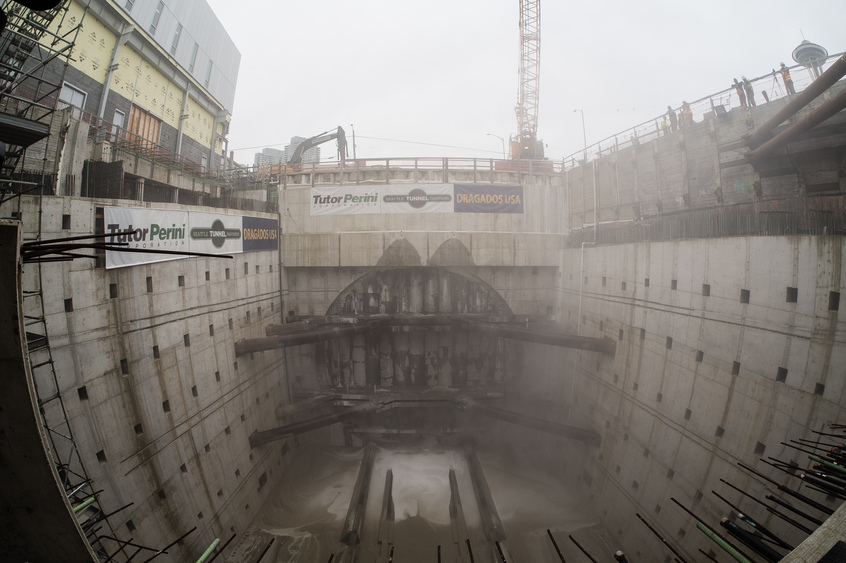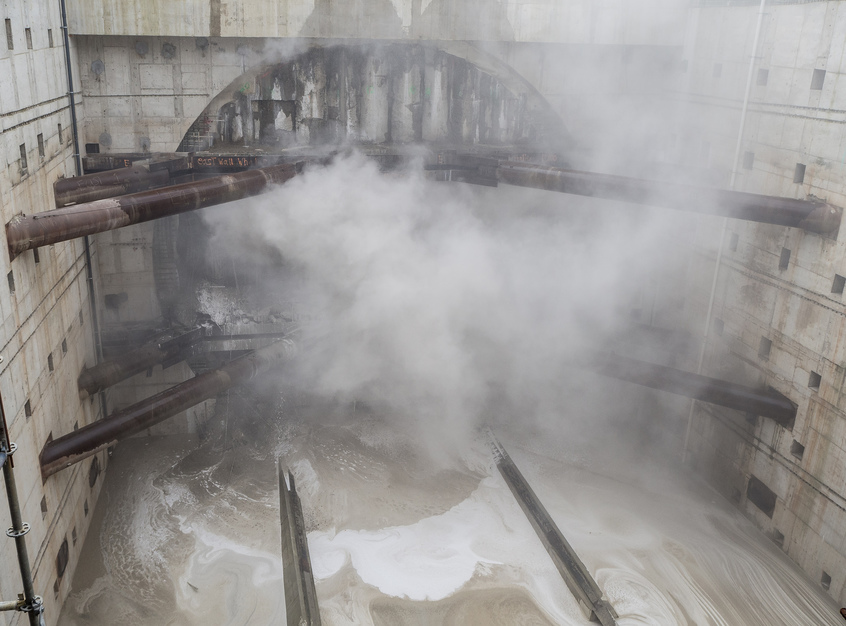Legal problems were set aside yesterday when Bertha, the world’s second-largest tunnel boring machine (TBM), finally broke into daylight in Seattle to mark an historic milestone in the city’s $3bn bid to revamp its downtown waterfront.
After spending two years broken and stuck underground just a thousand feet into her 1.7-mile drive under the city, Bertha finally resumed burrowing at the end of 2015 and her emergence made litigants come together and celebrate.
Seattle residents will now see work progress on a controversial scheme to beautify downtown by moving a 2-mile section of state highway down into the tunnel Bertha just made, allowing the city to demolish an unsightly old elevated highway.
The tunnel was originally meant to be finished in 2015, and hopes are pinned now on a 2019 opening, but yesterday officials were looking on the bright side.
“This is [an] historic moment in our state’s transportation history,” said Washington state governor Jay Inslee. “Innovation and perseverance are the engines that keep Washington in the forefront. There is still more work ahead but this moment is one worth celebrating.”
His words were echoed by a project manager from the contractor, Seattle Tunnel Partners (STP), a joint venture between Spanish firm Dragados and California company Tutor Perini Corporation.
“We were always confident that we would successfully complete the tunnel drive,” said STP project manager Chris Dixon. “The dedication and commitment of everyone on the Seattle Tunnel Partners team has been exceptional, and we wouldn’t be at this milestone without the hard work of our crews.”
But why did Bertha break down?
STP still has much work to do. Inside the tunnel crews must finish building the double-deck highway plus the mechanical and electrical systems. Above ground, the old elevated highway, the Alaskan Way Viaduct – which opened 64 years ago to the day yesterday, 4 April – will be demolished in 2019.

The 90-foot-deep disassembly pit is ready for Bertha
Overshadowing the project, meanwhile, is a legal battle over the cause of Bertha’s breakdown.
She had only dug around 1,000 feet when she ran into trouble in December 2013. According to local media, her teeth got caught on a long steel pipe that no one had accounted for, but the Washington State Department of Transportation, the agency in charge of the project, maintains that Bertha heated up, and sustained damage to her system of seals.
In rescuing Bertha, STP had to build a 120-foot-deep pit in front of her so she could ease into it, allowing crews to retrieve her cutting head and fix it. That mission was completed in December 2015.
The cause of damage to Bertha is in dispute, and in litigation. Last year it was reported that Bertha’s breakdown would cost taxpayers an estimated $223m through cost overruns, and that STP’s claims exceed $200m.
Yesterday, though, Seattle’s mayor was among those preferring to celebrate.
“Today is a major construction milestone in our plan to reclaim Seattle’s waterfront,” Mayor Ed Murray said. “We are one step closer to taking down the viaduct to make way for a reimagined waterfront and surrounding downtown neighbourhood. We will build a waterfront for pedestrians, transit and sensible car trips without a freeway wall casting a shadow over our vision of a well-connected 21st century city.”

Here she comes …
Bertha’s own future, now that she has completed her mission, looks far less rosy.
According to the state transport department, crews will drive her forward into the 90-foot-deep disassembly pit and begin cutting her up for removal, with STP deciding what to salvage and what to recycle.
With a cutting face diameter of 17.48 metres, she was the largest TBM in the world when built in 2011, but was surpassed in 2015 with the 17.6-metre-diameter TBM built for the Tuen Mun-Chek Lap Kok subsea highway link in Hong Kong, according to website TunnelTalk.
Images courtesy of Washington State Department of Transportation
Further Reading:










